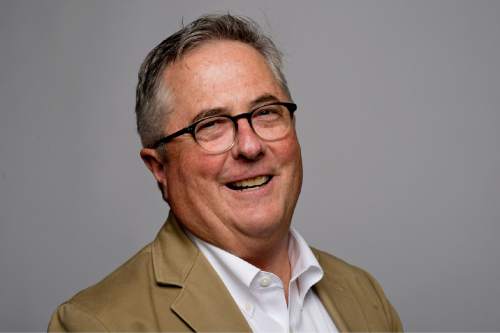This is an archived article that was published on sltrib.com in 2015, and information in the article may be outdated. It is provided only for personal research purposes and may not be reprinted.
Recent changes on our comics pages have proven, once again, that newspaper readers are dedicated to their funnies. Poring over comics becomes a habit, usually formed at a young age. When editors disrupt that routine, they hear about it.
For the record, our hand was forced in most of the comics we have dropped in recent months. The creators stopped producing the strips, and we didn't want to publish reprints — we already do that with "Peanuts" and "Doonesbury" — and preferred to serve up fresh content for readers.
In The Salt Lake Tribune this Sunday, we offer a special section that looks at how the funny pages came to be a staple in daily newspapers. The section comes courtesy of King Features Syndicate, an early provider of comics to newspapers, and one of the syndicates to which The Tribune subscribes. Founded in 1915 by newspaper baron William Randolph Hearst, King Features is celebrating its centennial.
Included are such early strips as "The Yellow Kid," from Hearst's New York Journal circa 1896, and "The Katzenjammer Kids," which King claims is the longest-running comic in newspaper history and among the first to use speech balloons for character dialogue.
The special supplement includes a history of the comics and the role they played in the famous newspaper wars between Hearst and Joseph Pulitzer.
By 1915, funny pages were included in almost every U.S. newspaper. There were, however, two holdouts. Read the section to find out who they were. I hope you enjoy the vintage comics, including an early incarnation of Popeye in "Thimble Theatre."
The comics celebration is one of two special sections this Sunday.
We also give you our presentation of The Salt Lake Tribune's Top Workplaces.
For the second year, we announce our awards to companies that do right by their employees. We single out 25 small businesses (fewer than 124 employees), 20 midsize companies (125-399 employees) and 15 large ones (400-plus).
So, how do we rank the best places to work along the Wasatch Front? We went to the people who know — the employees.
In partnership with WorkplaceDynamics, a Pennsylvania-based employee-survey firm, we invited companies to participate. WorkplaceDynamics polled more than 18,000 workers.
What we found is that a good workplace goes beyond fair compensation to create a supportive environment in which workers feel challenged and engaged in a worthy endeavor.
The special section is more than a listing of the top companies. Stories delve into what makes theses places tick, and how managers create places where workers succeed. Interestingly, The Tribune's Tony Semerad reports that almost a quarter of the top workplaces involve Utah's robust health-care industry.
Both these sections provide fodder for spending a little extra time reading. And if your Sunday is filled up, hold on to them for later. Top Workplaces also will have a prominent presence on sltrib.com — go to topworkplaces.sltrib.com.
Terry Orme is editor and publisher. He welcomes feedback on The Tribune at orme@sltrib.com.



